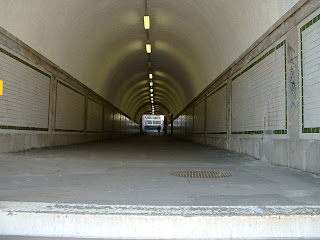The castles cover the entire Ticino river valley and are built in a tiered fashion, each one higher than the next. Of course, Daria and I decided to do the three on foot, so you'll see how the altitude changes with each castle visited. Here are some pictures of the trip:
Here's Castlegrande, the lowest and largest of the three from the piazza in town.

The center of the castle now houses a sculpture garden:

In this castle, the walls are so massive they literally make a causeway:

You probably noted from the first picture that the entire castle is built on a single rock. If you hadn't you can see it here:

If you look carefully past Castlegrande, you can see our next destination--Castle Montebello.

Montebello is a smaller castle (just as the number of visitors thinned out there, I suspect the number of soldiers who could have made it there would nave been smaller, too...). Here's a bit of the lowest part of the pathway:


Almost to Montebello--

Proof I made it:

Castlegrande from Montebello:

OK, off to the final castle, Castle Sasso Corbaro. This is the highest and smallest of the three, but the views a beautiful:



One the way back down, we briefly had a buddy--

By the time we arrived in town, we were ready for a beer and head for the train station.
For fun, check out this link and click the "webcam" for up to date images of Bellinzona!




































